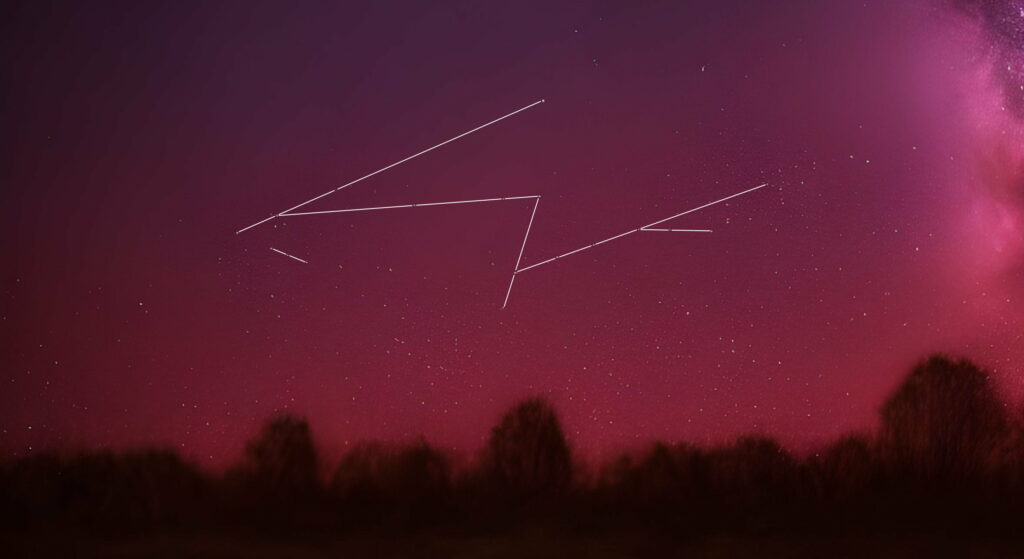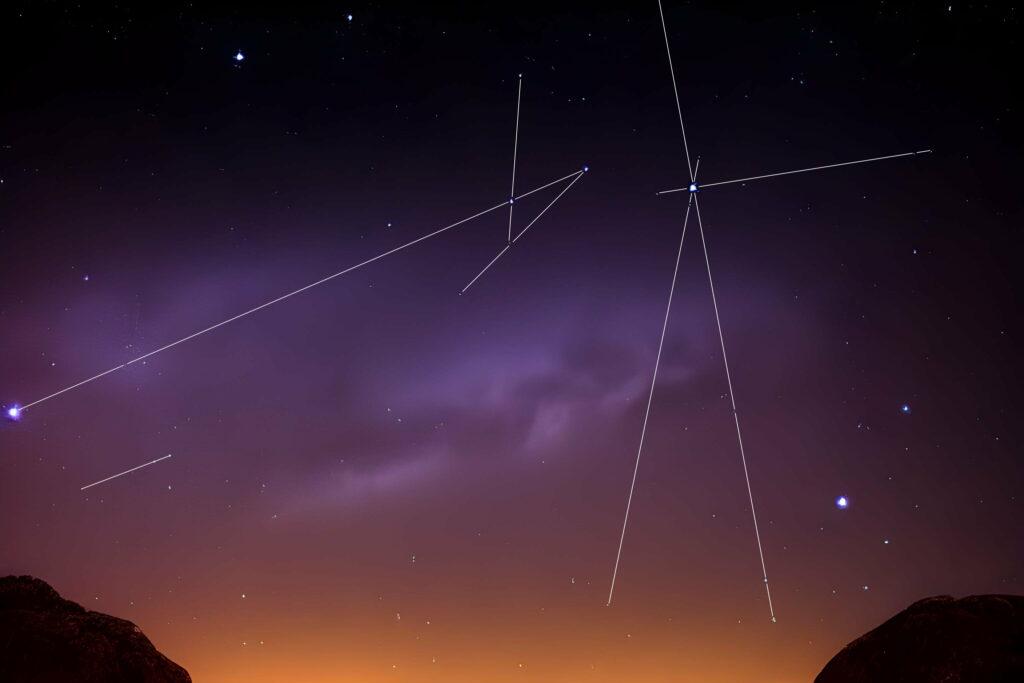Over the last three or four years I’ve undertaken a couple of different rounds of psychotherapy. I liken the experience to that of spotting constellations in the night sky.

That’s probably the result of the goal I stated when going in to the first round: I’d like you to help while I take myself apart, try to understand how I work, and then put myself back together again.1 I’m trying to connect the dots between who-I-once-was and who-I-am-now and find causal influences.
As I’m sure you can imagine: with an opening statement like that I needed to contact a few different therapists before I found one who was compatible with my aims2. But then, I was always taught to get three quotes before hiring a professional.

It’s that “connecting the dots” that feels like constellation-spotting. A lot of the counselling work (and the “homework” that came afterwards) has stemmed from ideas like:
- This star represents a moment in my past.
- This star represents a facet of my identity today.
- If we draw a line from one to the other, what does the resulting constellation look like?
I suppose that what I’ve been doing is using the lens of retrospection to ask: “Hey, why am I like this? Is this part of it? And what impact did that have on me? Why can’t I see it?”
When you’re stargazing, sometimes you have to ask somebody to point out the shape in front of you before you can see it for yourself.

I haven’t yet finished this self-analytical journey, but I’m in an extended “homework” phase where I’m finding my own way: joining the dots for myself. Once somebody’s helped you find those constellations that mean something to you, it’s easier to pick them out when you stargaze alone.
Footnotes
1 To nobody’s surprise whatsoever, I can reveal that ever since I was a child I’ve enjoyed taking things apart to understand how they work. I wasn’t always so good at putting them back together again, though. My first alarm clock died that way, as did countless small clockwork and electronic toys.
2 I also used my introductory contact to lay out my counselling qualifications, in case they were a barrier for a potential therapist, but it turns out this wasn’t as much of a barrier as the fact that I arrived with a concrete mandate.